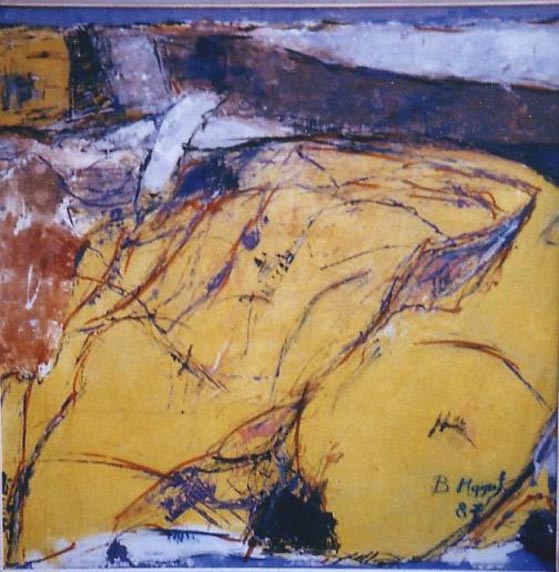Sava Stepanov
Sava Stepanov, an art critic from Novi Sad, Serbia
The solo exhibition at the Association of Fine Artists of Serbia (ULUS) from February 11th to February 24th 1998
Belgrade, Serbia
Published in 1998
The painter Vlastimir Madic belongs to those many lovers of landscapes, especially the landscape of Deliblatski pesak sand dunes, who knew how to articulate their experiences and delights pictorially and to create their own painterly attitude and expression. Madic explained his commitment to the theme of landscape during his entire creative development, and it is possible to conclude that the landscape-painting matured in sync with the maturation of the painter's creative personality. After all, in the case of Vlastimir Madic, the fate of numerous painting actors in Vojvodina, in the regions of the Vojvodina landscapes and in the regions of the pictorial organism, is only being repeated. In his original paintings, Vlastimir Madic tried to harmonize the painted motif with the appearance of the real landscape. However, by gradually breaking down the plastic whole of the pictorial unit into artistic elements (color, line, compositional rhythm) that gained more and more autochthonousness, Madic entered more significantly into the area of the image itself as media privacy, as expressive authenticity.
 |
Childhood dreams painted with landscape: "Stara planina" |
Interpretative consistency began to be lost in panoramic motifs, in plan-scenes where the lines spread out before the viewer like a disjointed ground-line tangle. In these images, the line has the primary power and role. It was used to write a motive but also to express expressiveness; she dictated the intensity of the overall rhythm of the picture. Finally, in harmony with the unruly color, she, as dynamic and robust as she was, was a real seismograph of the artist's excitements and tremors, but also of the co-observer and his experience. The coloristic sound is also specific, leveled at the midpoint between "original" and "pure" color values and its more muted variations. Such a painting had its own authentic look, but at the same time, it testified to a somewhat restrained painter's temperament. Simply, Vlastimir Madic insisted on the unity of all participating elements in the picture, he was looking for a coherent pictorial work, and to that end he had to make some sacrifices. However, in the paintings that are currently created in this painter's studio and exhibited in this exhibition, in this sense, artistic changes are taking place. Even more decisively, Madic breaks the mimetic connection with the motif and steps into the realm of abstraction. This is not about a spectacular and unexpected change, but about a harmonious transposition resulting from continuous action, from logical changes in the understanding of the pictorial organism. The most significant changes occur in the domain of colors. The composition is freed from the reinforcing strength of the line - it is translated into color because the painter lets it drip on the canvas (dribbling) in thin traces. That leakage is strictly controlled, so it even gives the impression of geometric structure. Nevertheless, the necessary shift in the structure created by Madic introduces numerous accents, color rich surfaces that possess the expressive value of pictorial data in which elements of a new understanding of the image can be seen, but also a special artistic poetics charged with a sensibility so close to the contemporary observer and his aesthetic needs.
Dusan Djokic
Dusan Djokic, an art critic from Belgrade, Serbia
The "Stara Kapetanija" Art Gallery, from the February 6th to February 18th 1990
Belgrade, Serbia
Published in 1990
In the series of paintings that were the subject of Vlastimir Madic's careful study during the past decade, some peculiarities emerged that clearly indicated that it was a matter of a kind of maturation and rounding up of earlier experiences, finding that space of action where a certain typological structure emerges in the foreground and symbolism, a separate "genre line" guided by moderate expression and concentration on seemingly taken motif coordinates, a landscape or terrain seen from a distance with a raised horizon is imposed more as a "field of action" than a literal vision, so in this sense it became closer to the concept of the image as an autonomous, an almost abstract frame, which is also highlighted in the selected chromaticity of light and dark ochre, umber, dove blue, with a free nervature of dark strokes that form a conglomerate structure, similar to the formations of dried roots or terrain threatened by drought.
 |
"Exotic landscape", oil on canvas, 1987 |